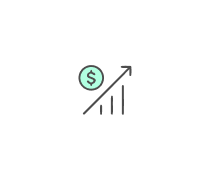Holding on to something because of "sentimental value" simply means a...
A budget line and a production possibilities frontier...
If labor is a variable input to production, then the law of...
Resources are unlimited in a wealthy society.
What is the slope of the line Y = 5x + 10?
Economic growth may occur when...
The basic coordinating mechanism of buying and selling activities in a...
In the theory of the firm, "long run" denotes...
A donward-sloping Income Consumption Curve implies...
Every point on the production possibilities frontier is technically...
The degree of responsiveness of one variable when another variable...
If the first photographer is able to complete five in-studio shoots a...
When two people trade...
A country that devotes more of its resources to capital, all other...
Economic outcomes are judged by all or any of the following criteria,...
Opportunity cost...
A price change would have the largest income effect in which of the...
A price ceiling below the equilibrium price...
Economic costs...
Which of the following is NOT an opportunity cost of attending...
In consumer theory, the best affordable bundle (combination) of x and...
If economic profit is zero...
Economic Cost...
A convex indifference curve...
Things that have been produced but are in turn used to produce other...
In the long run, supply, in general, tends to be more...
If you eat a sushi restaurant that charges Php600 for its "eat all you...
Points lying on the same indifference curve represent...
A firm's short run total cost curve...
A price ceiling tends to result in a...
A positive cross price elasticity of one good in terms of another...
If resources are combined efficiently in production...
Because resources are scarce, the opportunity cost of investment in...
Giffen goods are Veblen goods.
A person's labor supply curve...
The slope of a vertical line
Making a product illegal will raise its price.
A firm's marginal costs in the short run...
In the labor market, households are suppliers.
The law of diminishing marginal utility refers to...
Which of the following criteria is being fulfilled by a tax system...
Which of the following is held constant along a demand curve?
Perfectly elastic demand for a good implies that...
"Absolute advantage" means one party facing lower opportunity cost...
The bulk of the burden of a tax falls on...
A cardinal approach to utility is based on "revealed preference" (i.e....
The demand curve will slope downward as long as the income effect...
"The economy was expanding throughout my years as an undergraduate in...
Consumer surplus...
People scalping tickets for a La Salle-Ateneo UAAP basketball game...
Which of the following activities can be understood as "production" in...
The broader a market is defined to be, the more ________ market demand...
In a concert, you stand up to get a better look at the performance....
The market's price system...
Raising the price of a good with a demand elasticity equal to -1...
Giffen goods have upward sloping demand curves because...
For inferior goods, the substitution and income effects of a price...
The short run is a standard and definite time period when one or more...
Higher indifference curves stand for higher levels of utility.
"I've lived in this village all my life and I've never experienced...
















